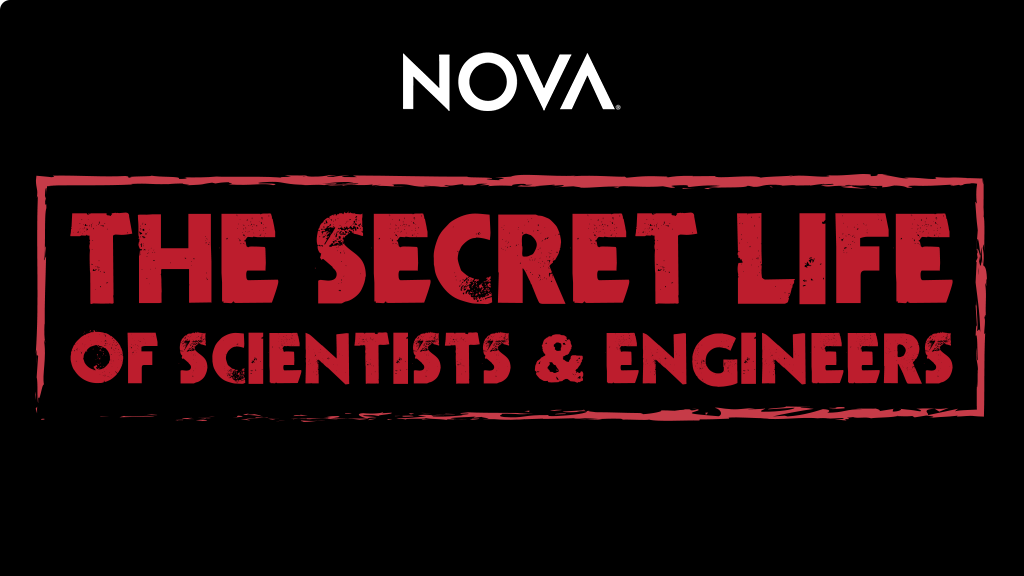Colin Angle
Colin is an engineer and inventor of robots. He is the CEO and Co-Founder of iRobot, which builds robots for home, military, and civil-defense use.

Meet roboticist and extreme athlete Colin Angle in these videos, blog posts, and interviews from NOVA's "The Secret Life of Scientists & Engineers."
“I like to think of myself as being sufficiently crazy to try new things.”
Science:
Colin Angle is a roboticist who invented the Roomba, the device that vacuums your floor so you can focus on more important life goals.
Secret:
Colin is an extreme athlete who thinks that rocks are for climbing, oceans are for sailing, and mountains are for cold-weather launching pads.
Big inventions
Colin Angle builds small robots that yield huge results.
Learning something new
Colin Angle scratches his restless itch on the archery range and beyond.
30-second science with Colin Angle
We give Colin Angle 30 seconds to describe his science, and he winds up with a bit of spare time.
10 Questions for Colin Angle
We ask Colin Angle 10 questions and he extols the virtues of mulitple dimensions.
Origin of the scientist
When Colin Angle was 3, he fixed his family’s toilet after consulting a picture book. When I was 3, I put a banana in the VCR because I thought I could watch it on TV….
Colin has made some pretty incredible achievements since his preschool plumbing days. The New York Times has profiled his amazing life in science, from his inspired youthful inventions to founding iRobot. Reading it made me think that my banana incident foreshadowed my life in film, just like Colin’s early interest in machines link to his adult life as an inventor…at least that’s what I’m going to tell myself from now on. (Still sorry about that, mom.)
Why robots like Roomba drink Pepsi
While we were already pretty excited about interviewing iRobot founder Colin Angle, our enthusiasm soared even higher when he arrived at our studio with a Roomba. You see, we people of SLoS are notoriously poor housekeepers, and our floors are always dirty. (We choose to regard this as an inevitable byproduct of being “artists.”) Colin’s little vacuum-cleaning robot saved the day for us, zigging and zagging around our studio, sucking up tons of dirt, and leaving us all feeling minty fresh. And while the focus of Colin’s “Big Inventions” video is on his space-bound robots, the Roomba is his invention that almost everyone knows about—his company’s sold more than three million of them (which makes us think there must be a lot of “artists” out there).
But here’s the thing—the Roomba wasn’t always the Roomba. Or at least, it wasn’t always the semi-ubiquitous cleaning dynamo it’s now become. Colin explained to us that soon after the initial sales success of the Roomba, things were actually looking pretty bleak for the Roomba and for his company…
“It was the week after Thanksgiving and sales were very disappointing—and we were still a pretty fragile company financially. It was a stressful time. We would get together every morning and [one day] the guy who ran direct sales raised his hand and said, ‘Hey guys, why did sales triple yesterday?’ Well, we didn’t know why. We hadn’t done any ads, there was no newspaper article about us, and we hadn’t been on ‘Oprah’—but sales had somehow tripled. And one of our engineers raised his hand and said, ‘Well, you know, I saw this Pepsi commercial yesterday—maybe that was it.’”
Colin told us that even though the vacuum-cleaning robot that stole Dave Chappelle’s pants wasn’t a Roomba, “it did make robot vacuum cleaners real to hundreds and hundreds of thousands of people, and they went out and bought Roombas.” Sales shot through the roof from that day onward, Colin explained, and so a robotic vacuum-cleaning legend was born.
And that’s why robots like Roomba drink Pepsi.
Ask Colin your questions
Q: What’s your favorite robot that you’ve built, and what’s your favorite robot that iRobot is developing now?
CA (Colin Angle): My favorite robot that I have personally built (i.e. me soldering) was Genghis. Genghis was a six-legged walking robot, and it showed the world that robots didn’t need super computers to dexterously walk through complicated terrains. Today, iRobot is starting to field the SUGV (Small Unmanned Ground Vehicle). This robot is a true masterpiece. Light-weight, carrying a host of sensors, able to climb stairs, and designed to be serviceable and manufacturable, SUGV is a robot that will help to save warfighters’ lives.
Q: Is there any back story to the PackBot with the paintball gun? Also, does this mean that we can expect a laundry folding robot from iRobot sometime soon?
CA: We have a tradition at iRobot of having an annual paintball contest between the different divisions of the company (the Corporate team is the current champion – yea!!). The Government and Industrial division mounted a paintball gun onto the PackBot to investigate if it could play – and because it was a very fun thing to do after hours. We actually learned a lot about how difficult it is to operate a robot in a very dynamic environment, and it has influenced some of our human-robot interface projects.
About the laundry-folding robot, nope. Low-cost manipulation is still hard.
Q: Do you ever think of inventing robots that would help us clean our cars after snow falls? How long that should take to build a small robot like on this video one? I was thinking of a robot machine that would help to plant thousands of trees in my home country's mountains to help with disasters after hurricanes’ season.
CA: Every time I shovel out my car, I think, “a robot should be doing this.” Of course, this happens less frequently than me thinking “a robot should be folding my laundry.” There are so many other chores around the house that need to be taken care of on a daily or near-daily basis, so I think we should focus on those first.
Q: Have you tried making tiny robots? Nano technology is a relatively new and “small” emerging field: What’s the smallest robot you have ever built?
CA: At MIT, in Professor Rodney Brooks’ lab, I was involved in a project, led by Anita Flynn, to build robots using techniques similar to those used in building silicon chips. We got some silicon micro-machined motors to move a bit, but this didn’t lead to an actual product. One of the first projects at iRobot was to build control systems for tiny nano-robots. Again, we did some cool work in simulation, but the robots proved extremely challenging. I believe one day nano-robots will play an important role in medicine.
Q: What do you think of robotic toys/companions for children? Do you have them for your daughter? Do you think they stifle creativity? What do you think of robots as companions for elderly people? A future full of “robot friends” seems worrisome to me.
CA: Robotic toys can be very interesting, but it is important that the toy not “dictate” how the child should play with it. Rather, it should take its cues from the child and enhance, teach, and enrich the play experience. We incorporated some of these features into a robotic baby doll we built for Hasbro in 1999. Of course, making a robot that is aware of its environment is extremely difficult.
I believe that robots have great potential for seniors, allowing them to live more independently at home for longer periods of time. From helping them get around, to bringing them medications at the right time, to decreasing social isolation and serving as a link to their doctor, there are many critically important tasks that robots will one day provide. This is not an if, but a when.



